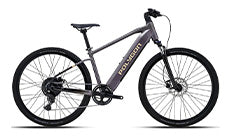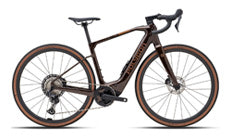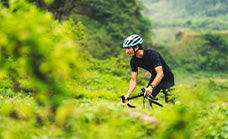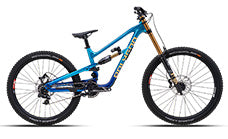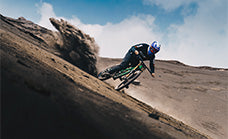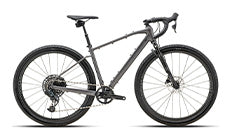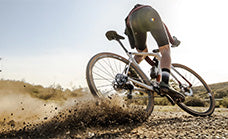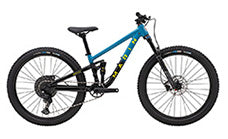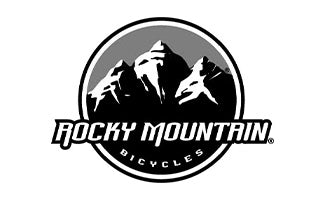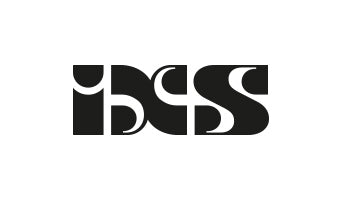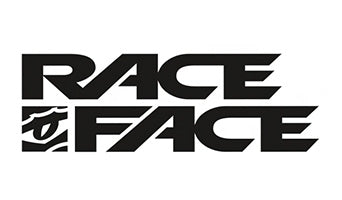Choosing Bike Pedals: Easy Tips for Beginners

Selecting the right bike pedals might seem like a simple decision, but for beginners, the variety of options can feel overwhelming. Your pedals are the crucial connection point between you and your bike, directly influencing comfort, efficiency, and riding experience. Whether you're just starting your cycling journey or looking to upgrade your current setup, understanding the different types of pedals and their benefits will help you make an informed choice. BikesOnline experts have compiled this comprehensive guide to simplify the selection process and help you find the perfect pedals for your needs.
Understanding the Different Types of Bike Pedals
Platform Pedals: The Beginner-Friendly Choice
Platform pedals, also known as flat pedals, are the most straightforward option for new cyclists. These pedals feature a simple, flat design that allows you to wear any type of shoe—from sneakers to sandals. Their key advantages include:
-
Easy Entry and Exit: No special shoes or techniques required
-
Confidence at Stoplights: Quick removal from pedals reduces anxiety about stopping suddenly
-
Versatile Footwear: Compatible with any shoes you already own
-
Budget-Friendly: Generally less expensive than specialized systems
Platform pedals work by providing a surface area for your foot to rest on, often with pins or textured surfaces to prevent slipping. While they may not offer the efficiency of clipless systems, they're perfect for learning riding basics without additional complexity.
Toe Clip Pedals: The Middle Ground
Toe clip pedals, also called cage pedals, combine elements of both platform and clipless systems. These pedals feature a cage or strap that secures your foot in position while still allowing quick release. Their main characteristics include:
-
Improved pedaling efficiency compared to platform pedals
-
Work with regular shoes
-
Require a slight learning curve for entry and exit
-
Provide better foot positioning
-
More affordable than clipless systems
Toe clips are increasingly less common in modern cycling, but they remain a good transitional option for riders wanting to experiment with foot retention without committing to clipless systems.
Clipless Pedals: Maximum Efficiency
Despite their confusing name, clipless pedals actually require special shoes with cleats that clip into the pedal mechanism. These systems offer the highest level of efficiency and control but require a learning curve. Benefits include:
-
Enhanced Power Transfer: Connected to pedals throughout the entire pedal stroke
-
Better Control: Secure connection improves handling, especially on rough terrain
-
Improved Efficiency: Ability to "pull up" during pedaling adds power to your ride
-
Multiple Types Available: Road and mountain bike specific options
The main challenge for beginners is learning to clip in and out safely, which can take practice and may lead to a few awkward moments as you develop the technique.
Factors to Consider When Choosing Pedals
Your Riding Style and Purpose
Your choice of pedals should align with how you plan to use your bike. Different riding activities demand different pedal characteristics:
Commuting and Casual Riding: Platform pedals excel for short trips around town where you frequently stop at intersections. They allow you to wear regular shoes and avoid the awkward walking associated with cycling cleats. Many commuters also appreciate the ability to quickly put a foot down when navigating traffic or waiting at stoplights.
Recreational Road Cycling: Riders focusing on fitness or longer distances often benefit from toe clips or entry-level clipless systems. These provide improved efficiency without being overly technical. Look for pedals with double-sided entry for easier engagement when learning.
Mountain Biking: Trail riders typically choose either grippy platform pedals with pins for maximum foot security or specialized mountain bike clipless pedals that offer easy release when putting a foot down on technical terrain. The choice often depends on skill level and risk tolerance.
Performance Cycling: Serious road cyclists and competitive riders almost exclusively use clipless systems for maximum power transfer and efficiency. The connection allows for smoother pedaling and better energy utilization over long distances.
Comfort and Fit
Pedal comfort directly impacts your riding experience, especially on longer rides. Several factors contribute to comfort:
Pedal Size and Shape: Larger platform pedals distribute pressure more evenly across your foot, reducing hot spots and numbness. For clipless pedals, float (the amount of lateral movement allowed while clipped in) significantly affects knee comfort during longer rides.
Bearing Quality: Smooth-turning bearings reduce friction and effort while pedaling. Higher-quality bearings also resist water and dirt intrusion, extending pedal life. Look for sealed bearings or serviceable designs for long-term reliability.
Weight Considerations: While lighter pedals can improve performance, extremely lightweight options often sacrifice durability. For beginners, prioritize reliability and ease of use over weight savings.
Budget Considerations
Bike pedals are available across a wide price range, typically following these categories:
Entry Level ($50-$100): Basic models offering essential functionality without premium features. These work well for casual riders and beginners who want to experiment with different pedal types without significant investment.
Mid-Range ($100-$200): Quality components with improved durability and performance features. These pedals often include better bearings, more adjustability, and better foot retention mechanisms. BikesOnline recommends this range for riders serious about improving their cycling experience.
High-End ($200+): Premium materials like carbon construction, titanium spindles, and advanced engineering for weight savings and improved performance. These pedals target competitive cyclists and enthusiasts seeking the best technology available.
Remember that clipless systems also require specific shoes, which add $100-$300 to your total investment. Factor this additional cost when comparing systems.
Making the Transition to New Pedals
Starting with Platform Pedals
Most beginners benefit from starting with platform pedals while learning basic riding skills. This approach allows you to focus on:
-
Balancing and steering without pedal complications
-
Understanding your bike's handling characteristics
-
Building leg strength and endurance
-
Developing comfort with stopping and starting
Quality platform pedals provide a stable base for learning proper pedaling technique and help you understand if cycling suits your lifestyle before investing in specialized equipment.
Practicing with Toe Clips
If you decide to experiment with toe clips, practice these techniques in a safe environment:
-
Start with loose straps: Gradually tighten as you become comfortable
-
Practice quick releases: Learn to slide your foot out quickly
-
Master single-side starts: Get comfortable with one foot clipped in while starting
-
Try different foot positions: Find what feels most natural for your riding style
Learning Clipless Systems
Transitioning to clipless pedals requires patience and practice. Follow this progressive approach:
Step 1: Initial Setup
-
Get proper shoe fitting with room for foot swelling
-
Adjust cleat position for comfort
-
Start with loose spring tension for easier release
Step 2: Static Practice
-
Practice clipping in and out while holding onto a wall or fence
-
Focus on the twisting motion required for release
-
Practice with both feet until the movement feels natural
Step 3: Controlled Riding
-
Start on flat, car-free areas like empty parking lots
-
Practice clipping in while coasting
-
Anticipate stops and release early
Step 4: Real-World Application
-
Begin with short rides in safe areas
-
Gradually increase distance and complexity
-
Always unclip early when approaching stops
Consider your first few rides as learning experiences rather than performance sessions. Most riders experience at least one slow-speed tip over while learning clipless pedals—it's a normal part of the process.
Maintenance Tips for Pedal Longevity
Regular Cleaning
Keep your pedals functioning smoothly with regular maintenance:
Platform Pedals:
-
Clean off mud and debris after rides
-
Check pin length and replace bent pins
-
Lubricate bearings according to manufacturer recommendations
Clipless Pedals:
-
Clear mud and dirt from cleat engagement area
-
Apply light oil to moving parts
-
Check for wear on retention mechanism
For all types: Remove and grease pedal threads annually to prevent seizure and ensure easy removal for service or replacement.
Recognizing Wear and Replacement Needs
Watch for these signs that indicate pedal replacement:
-
Persistent squeaking or grinding noises
-
Difficulty engaging with clipless systems
-
Visible damage to the body or spindle
-
Excessive play in the bearing system
-
Inconsistent release from clipless mechanisms
Quality pedals typically last several years with proper maintenance, but don't hesitate to replace them when wear affects performance or safety.
Popular Pedal Choices for Different Cycling Styles
Best Options for Urban Commuting
For city riding and commuting, prioritize convenience and versatility:
-
Wide platform pedals with reflectors: Excellent visibility and foot stability
-
Combination pedals: Platform on one side, SPD clipless on the other
-
Water-resistant pedals: Essential for year-round commuting
Many commuters at BikesOnline choose dual-sided designs that accommodate both regular shoes and cycling cleats, offering maximum flexibility for multi-modal transportation.
Trail and Recreation Recommendations
Recreational riders often appreciate the following features:
-
Grippy pins for secure foot placement
-
Larger surface area for comfort on longer rides
-
Easy-to-clean designs for varied terrain
-
Durable construction for occasional rough use
Platform pedals remain popular for recreational trail riding, especially among riders who prioritize comfort over maximum efficiency.
Road Cycling Favorites
Road cyclists typically gravitate toward:
-
Three-bolt road pedals: Maximum power transfer and stiff platform
-
Lightweight construction: Carbon or titanium for performance gains
-
Adjustable float: Customizable leg movement for comfort
-
Aerodynamic profiles: Reduced wind resistance at higher speeds
BikesOnline road cycling specialists recommend starting with entry-level road clipless systems before investing in premium models, allowing riders to determine their preferences without significant expense.
FAQ About Bike Pedals for Beginners
Can I use any shoes with platform pedals?
Yes, platform pedals work with any shoes, though shoes with flatter soles provide better contact. Avoid shoes with thick, soft soles that might compress under pressure, reducing power transfer.
How difficult is it to learn clipless pedals?
Most riders master clipless pedals within 2-4 rides. The key is practicing in safe environments and starting with loose spring tension. Muscle memory develops quickly with consistent practice.
Do I need special pedals for mountain biking versus road cycling?
Yes, mountain bike pedals typically offer easier release mechanisms and shed mud better than road pedals. They also work with shoes featuring more tread for walking on trails.
How often should I replace bike pedals?
With proper maintenance, quality pedals can last 3-5 years or more. Replace them when you notice decreased performance, excessive wear, or compromised safety features.
Can I install pedals myself?
Yes, pedal installation is straightforward with a pedal wrench or hex key. Remember that the left pedal has reverse threading—turn counterclockwise to tighten, clockwise to loosen.
Conclusion
Choosing the right bike pedals is an important decision that impacts your comfort, efficiency, and enjoyment of cycling. For beginners, starting with platform pedals provides a solid foundation while you develop riding skills and determine your cycling preferences. As you gain experience and confidence, experimenting with toe clips or clipless systems can enhance your riding efficiency and control.
Remember that the "best" pedal depends on your specific needs, riding style, and comfort level with different systems. BikesOnline offers a wide selection of pedals across all categories, with knowledgeable staff ready to help you make the perfect choice for your cycling journey. Whether you're commuting to work, exploring trails, or training for events, the right pedals will help you ride with confidence and enjoyment.
Take time to consider your riding goals, practice with new systems in safe environments, and maintain your pedals properly for years of reliable performance. Happy cycling!


